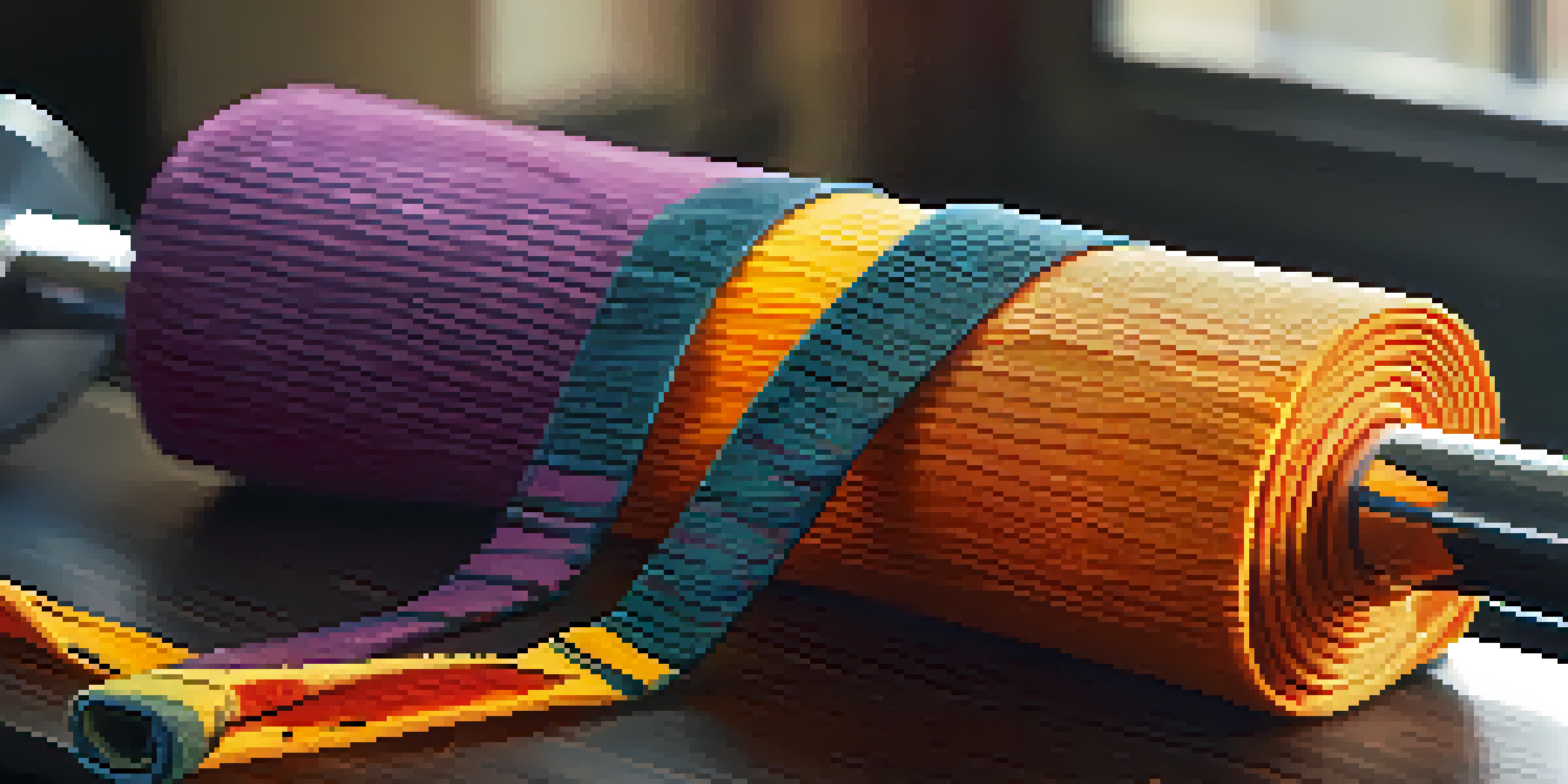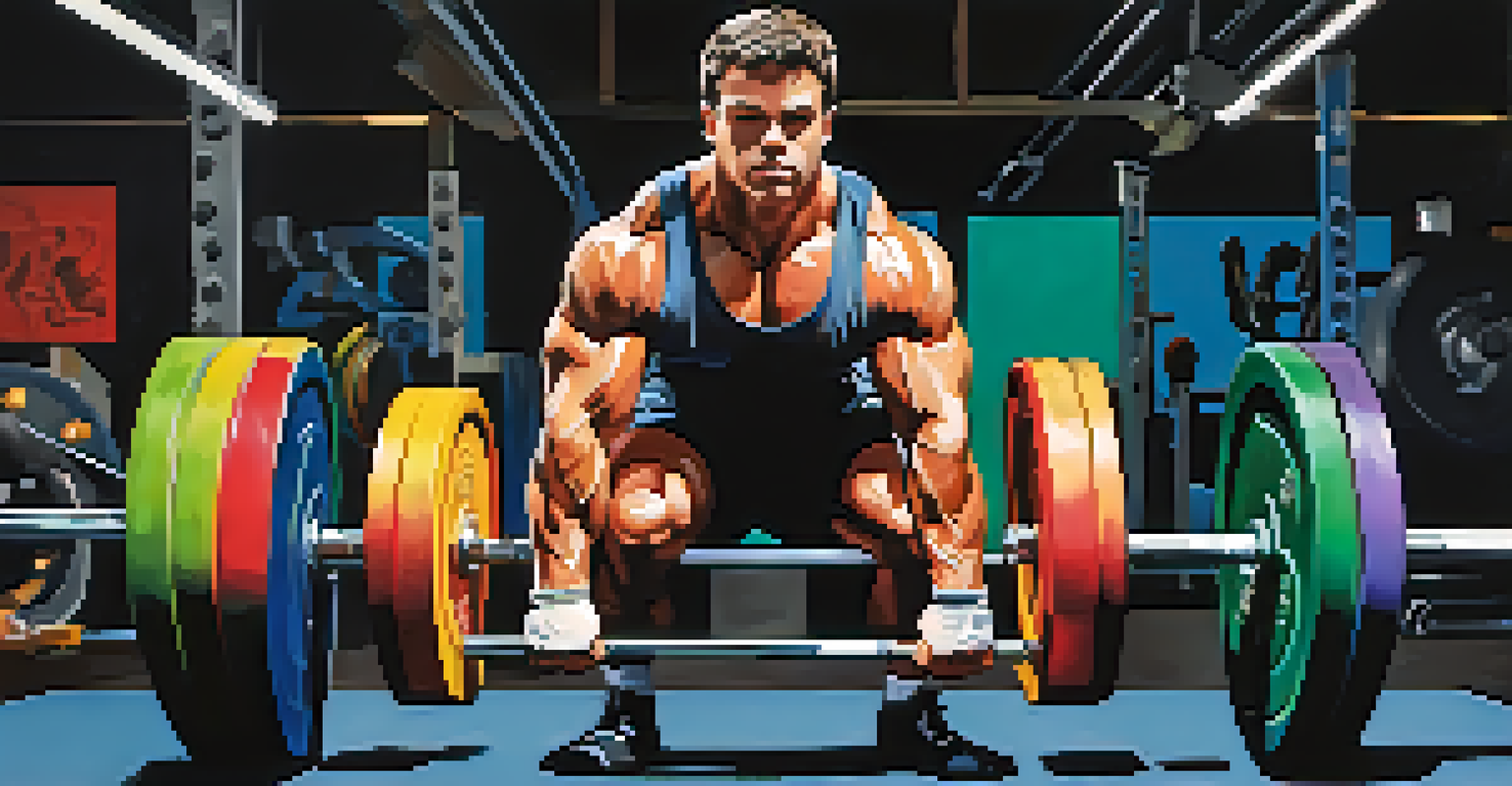Tips for Maintaining Your Powerlifting Wrist Wraps

Understanding the Importance of Wrist Wraps in Powerlifting
Wrist wraps are essential tools for powerlifters, providing support and stability during heavy lifts. They help to minimize the risk of injury, allowing you to push your limits safely. Think of them as a safety net that catches you when you're lifting big, giving you the confidence to go heavier.
Strength does not come from physical capacity. It comes from an indomitable will.
When correctly used, wrist wraps can enhance your lifting performance by ensuring that your wrists are properly aligned. This alignment can prevent excessive strain and fatigue, letting you focus on your strength rather than worrying about your joints. It’s like having a trusted spotter by your side, ensuring you lift to your potential.
However, to reap the benefits of wrist wraps, they need to be well-maintained. Just as you wouldn’t neglect your gym shoes, your wrist wraps require care to keep them in top shape. With the right maintenance tips, you can extend their life and improve your lifting experience.
Regular Cleaning: Keep Your Wrist Wraps Fresh
One of the simplest yet most effective ways to maintain your wrist wraps is through regular cleaning. After each training session, it’s a good idea to wipe them down with a damp cloth to remove sweat and bacteria. This small step can prevent the buildup of grime that can wear them out over time.

For a deeper clean, you can hand wash your wrist wraps with mild soap and water. Avoid harsh detergents, as they can damage the fabric and elasticity. Think of it like washing your favorite gym shirt; you want to keep it fresh without compromising its quality.
Wrist Wraps Enhance Lifting Safety
Wrist wraps provide crucial support and stability during heavy lifts, minimizing injury risk and boosting confidence.
Make sure to let your wraps air dry completely before storing them. Avoid putting them in the dryer, as the heat can warp the material. Just hang them up somewhere well-ventilated, and they’ll be ready for your next lift!
Proper Storage: Protecting Your Wrist Wraps
How you store your wrist wraps can significantly affect their longevity. After cleaning, it’s best to roll them up loosely rather than folding them tightly. This prevents creases and maintains their shape, much like how you would care for delicate clothing to avoid permanent wrinkles.
The only way to do great work is to love what you do.
Avoid storing your wrist wraps in damp or humid areas, as this can promote mold and deterioration. Instead, consider a dry and cool space, like your gym bag or a dedicated drawer. Think of it as creating a cozy home for your wraps, where they can rest safely between workouts.
Additionally, try to keep them away from direct sunlight, which can fade colors and weaken fibers. Just as you wouldn’t leave your car parked in the sun all day, your wrist wraps deserve the same consideration to ensure they’re always in peak condition.
Inspecting for Wear and Tear: What to Look For
Regularly inspecting your wrist wraps for signs of wear and tear is crucial. Look for frayed edges, loose stitching, or any signs of stretching that may compromise their support. Just like checking your lifting belt or shoes, it’s important to ensure your wraps are still up to the job.
If you notice any significant damage, it might be time to replace your wraps. Continuing to use worn-out wraps can lead to ineffective support and increase the risk of injury. Think of it like driving a car with a flat tire; it’s better to replace it than to risk a breakdown.
Regular Maintenance Extends Lifespan
Cleaning and proper storage of wrist wraps are essential for maintaining their effectiveness and prolonging their durability.
Making this inspection a part of your routine means you’re more likely to catch issues early, ensuring your wraps provide maximum support when you need it most. A little diligence goes a long way in keeping your lifting gear in great shape.
Avoiding Overuse: Know When to Take a Break
While wrist wraps are helpful, using them excessively can lead to dependency and weaken your natural wrist strength. It’s important to give your wrists a break from wraps, especially during lighter training sessions. Think of it as taking a rest day; your muscles need time to recover and grow stronger.
By occasionally lifting without wraps, you allow your wrists to build the strength they need for heavy lifts. This balance between support and natural strength is key to long-term success in powerlifting. Just like how diversifying your workouts can help prevent burnout, mixing up your use of wrist wraps will keep your lifting fresh.
Listen to your body and adjust your wrap usage accordingly. If you feel discomfort or fatigue in your wrists, it might be time to ease off the wraps and focus on strengthening your wrists naturally.
Choosing the Right Type of Wrist Wraps for Your Needs
Not all wrist wraps are created equal, and selecting the right type can make a significant difference in your lifting experience. Consider the level of stiffness and support you need based on your lifting style and personal preferences. For instance, beginners might prefer softer wraps for comfort, while experienced lifters may opt for stiffer options for maximum support.
Take the time to explore different materials and lengths. Some wraps offer adjustable features, allowing you to customize the fit for your wrist size and lifting technique. It’s like finding the perfect pair of shoes; the right fit can enhance your performance and comfort.
Choose Wisely for Best Support
Selecting the right type of wrist wraps based on your lifting style and needs can significantly enhance your performance.
Don’t hesitate to seek advice from experienced lifters or trainers when choosing your wraps. Their insights can help guide you toward the best options for your lifting goals, ensuring you invest in wraps that will support your journey effectively.
The Role of Timing: When to Use Wrist Wraps
Understanding when to use wrist wraps is just as important as maintaining them. Generally, they should be used during heavy lifts or when you're pushing your limits, such as during squats, bench presses, and deadlifts. Think of wrist wraps as your safety gear; you wouldn’t wear a helmet while jogging, but you would for a high-speed motorcycle ride.
Using wraps during lighter workouts may not be necessary, as your wrists can benefit from the training without support. This strategic approach not only helps maintain wrist strength but also ensures that your wraps remain effective when you truly need them.

Always tune into your body’s signals—if your wrists feel fatigued or strained, it might be time to reach for those wraps. By using them wisely, you can maximize their benefits and safeguard your lifting progress.